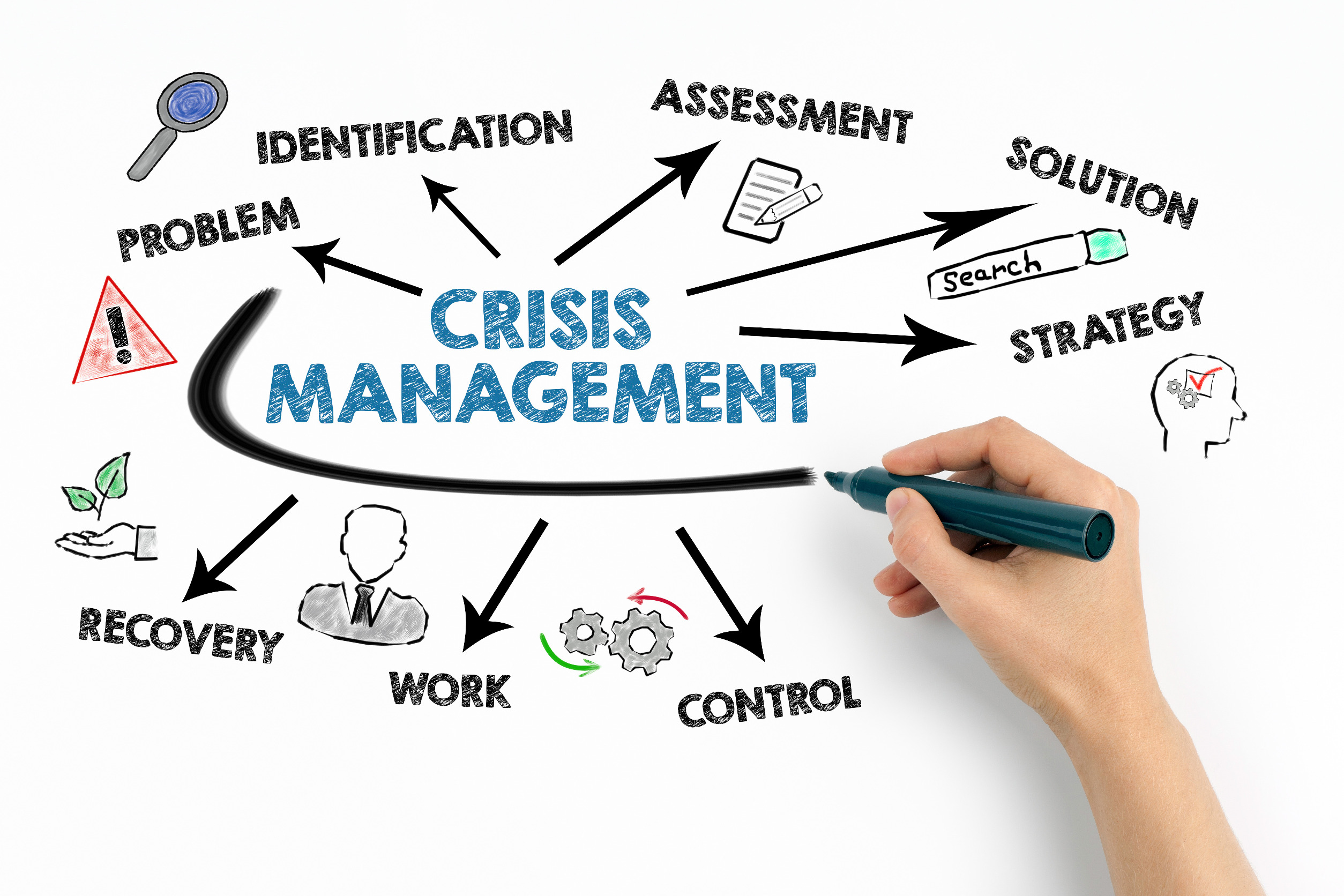Theresa Moulton, editor-in-chief of Change Management Review, recently spoke with Jason Little to discuss the different disciplines of Agile, LEAN and change management and the most successful methods of implementing agile change management in organizations.
Jason Little is an international speaker, author of Lean Change Management: Innovative Practices for Managing Organizational Change, and the creator of a video series, “Agile Transformation — A Guide to Organizational Change.”
How did you get into the field of change management?
“I fell into change management from the software field. I started as a software developer in the nineties, and then got into management, and what is now known as agile coaching or agile consulting. My context for change was working in organizations that wanted to move away from traditional practices and towards agile software practices. I realized that helping organizations move to new practices had a lot less to do with agile, and much more to do with change.
Over the last three or four years I’ve spent more time exploring the OD and change space, bringing agile and lean approaches for how we can modernize our change management practices. I see similar challenges in the change world that I saw in the software world, that is, you get the experts in the room, have them follow their method of choice, create a perfect plan and then blame people who resist change.
In contrast, agile is about co-creation. You’re involving the people in the design of the change who actually have to live with its consequences. As a change manager, I don’t create a program and then push it out on people; I take a coaching stance and a ‘how-can-we-get-away-from-running-change-activities-and-move-towards-experimentation’ approach. We know we need leadership support; we know we need to communicate; we know we need all these good practices. But don’t just have these practices end up as check boxes in the governance loop. I’ve spoken out against the 70% fact; I think organizational change is too complex to say it either worked or it didn’t. But we still tend to think that way. We give a change project a budget, a schedule and a Gantt chart and say, ‘Go.’ Then change people get measured on how many check boxes they hit. But at the end of the project and the end of the year, nothing’s really different. I spend most of my time exploring ways to take agile and lean thinking and figure out a more effective way to help organizations adjust to how work is different today.”
How do you see your view of agile change management as similar or different from what’s out in the popular press about agile change management?
“Most of the people that I know in change or organization development have tons of experience. They have a whole basketful of approaches and tools they use. They get it; they’re not just going to follow a particular method because that’s what an organization says has to be followed. They’re going to figure out, if they’re trying to create an innovation program, that sending out an ADKAR survey is probably not the best way to do it, because it’s not going to get people excited about the new innovation program. They try to do something that’s a little more lean start up, a little more edgy, a little more like a marketer thinks in order to get people to figure out
I see too much emphasis on methods and frameworks and certification—70% of the changes fail unless you take our certification; then it will always work. There’s too much emphasis on “leave the people out of it, but follow the process and the practices and get your certification in this method.” That might have worked twenty years ago. Not today. We don’t have the luxury of spending millions to have external change agents come in and create a perfect plan for six months. We need to be more biased towards action. If you look at how social change happens, that’s really what we’re trying to do as organizational change managers. We’re trying to manage the climate in an organization.
A colleague of mine, Andrew Annett, makes a very good point: ‘At the start of a project you have a pocket full of money and an empty brain. There is zero possibility that your project can be green. You know nothing. So start from the point of red.’ That’s where the climate change is. There are structural levers that people can pull in their organizations to move towards a more agile way of working. They force you to determine what are the top three things you’re learning this week to move yourself close to green.
Whereas the traditional change world would say, ‘Well we need to create an agile framework and an agile governance process; we need to train people and create awareness and create urgency because that’s what Kotter and ADKAR say we’re supposed to do.’ But six months down the road you still haven’t delivered any part of the change. So how do we do small experiments like having people start projects at red?
When I started with the company where I’m currently consulting, we wanted to move to a more agile way of working and needed to visualize our work. We put the work on sticky notes on the wall. They complained, ‘We can’t do that. We’re a big company, we’re distributed.’ When I told the Vice-President that he needed to be seen walking around in front of these boards, he did. His behavior of going to these walls and saying, ‘This is my single source of truth,’ enabled other people to start doing the same. Then people will stop sending a PowerPoint, they will stop sending long-winded emails and instead they will get in front of the big visible wall and start talking about risks and problems and issues like that. And that’s the lever the leader can pull. If he’s asking for it, people will do it. If I’m the change person trying to get people to do that, they’re never going to listen.”
Jason, I noticed that you have something called a “change management canvas.” Is that your wall tool or is it an analysis tool you use? Can you say a little bit about that tool?
“The change management canvas serves multiple purposes. At the heart, it’s intended to provoke a conversation. The canvas is influenced by A3 thinking. So if you’re familiar with Toyota’s history of lean management, you probably have heard of the A3 report. Its originator could never get past the first page of a status report. He would go to the floor, find the problem and talk to people. These actions influenced people to create the A3 problem-solving report—one 11×17 page that conveys: here’s our current state; this is the problem; this is the context around the problem; these are our countermeasures for solving this problem; and these are our measurements. Let’s run this experiment and see what happens.
All of the change management canvases basically use a similar approach—the conversation matters, the canvas itself doesn’t. In one case I might put the canvas up on the wall and say we need to talk about the things that matter to people. No one cares about awareness and desire—they’re good models but normal people and organizations don’t care if Kotter says urgency is step one. They just want to know what’s in it for them.
Let’s move to using language that non-change practitioners understand. Why is it important that the organization is moving to agile? Why is it important for user leadership teams that this change works? When you get to the heart of it, they realize that their performance depends on it. And then you have those really meaty conversations. You capture those conversations on an artifact and paste that artifact all over your office—the process becomes part of your communication plan. People see it, and it’s a sign that something’s happening. They might not totally get it or they might not be aligned around the change, but when the artifacts are up in the lunchroom and in high traffic areas, people walk by it. Some people will read it and not care. Some people will look at it and ask you, ‘Who can I talk to about this because I don’t understand what this is?’ I’ve been with my current client for a month and I’ve got a personal Kanban board up. So all my work is on sticky notes right beside where I sit. I’ve had people come up and ask what the board is. I tell them, and they ask if I can help them do the same thing. Many of them come back later and ask for help with a team who wants to try agile.
So if everything is hidden in our brains and in a physical system somewhere, you really don’t get that response. I believe that reaction is really the urgency that Kotter talks about and the awareness and the desire that Prosci talks about. It’s finding those early adopters or, as I like to call them, the movers, and infecting them with this energy. Then they will go out and spread it to other people. It takes some elements from Viral Change, some things from how communities are built, some things from how social movements happen.”
If you have this canvas right next to where you’re sitting at work, Jason, or in the lunchroom, or in a hallway, how do you handle people who read it and start to get nervous? How does this back channeling piece happen or not happen with that approach?
“It’s getting the agreement with the leaders to tell the organization that there are going to be both positive and negative responses. If you look at any psychological or social change model, for example, both [Virginia] Satir or [Elizabeth] Kubler [Ross], they have a curve; they talk about how everybody goes through this curve, but it’s not the same for everybody. There’s no evidence that shows Kubler Ross is right in an organizational change context. It’s the same for Satir. Some people see the canvas and they’re excited. Some people see the same thing and hate it. Some people see it and they’re indifferent. As change people we have to navigate that hairball. I make it very clear to leaders that, as soon as you start doing this work, you can expect positive, and negative responses. But where will it happen? With my VP example, there were a couple of layers above him. I made him aware that if we were going to plow ahead and figure out how to get agile to work in his context, we were going to make people outside of his group angry if we’re not following the standards.
And that would come down on him. He response was, ‘Well, we have the autonomy to do these things. So let’s plow ahead and do it and I’ll just deal with it.’
I make leaders aware that as soon as you start to put stuff up on the wall, somebody’s going to get pissed off about it and complain to the boss, who then complains to the boss’s boss. As the change consultant, I just give them the get-out-of-jail-free card—tell the bosses that the coach told you to do it because it’s a best practice in change management. And that might just get them off your back for a little bit. Sometimes it’s easier for an outsider to perform practices like that than a manager who is sandwiched between layers of hierarchy and doesn’t really don’t want to stick his/her neck on the line to try something. You have to make it safe for people to try things out.”
So where you do you see the biggest challenges in applying agile practices?
“In terms of applying agile change management practices, it’s the people—us, the change folks. There’s a lot of emphasis on change resistance. But I find that change managers are, themselves, quite resistant to trying new techniques. Some are married to their certification, ‘I know best, I’m certified, that’s the wrong way, and my way is the right way.’ I believe that particular attitude is inappropriate for a change manager. It might be good project management thinking, but if we’re talking transformational change or people change, it’s not the best approach to take—it’s not good for the profession. There is no recipe!”
What’s your main message to people who are entering the change management profession?
“I actually wrote a post earlier this year about that topic. Someone who had just completed a change certification course asked me, ‘Well, for somebody like me who’s brand new, what am I going to do?’ When I was brand new to agile, I went through a certification course. But for me, as for many people, it was a catalyst for learning. I didn’t know what I didn’t know, so a certification course served that purpose. But there are people who collect certifications—a CSM, ADP, QM5 and whatever after their name. They collect certifications because they like it, and there’s nothing wrong with that. But for people who are new—learn multiple methods. There are easily forty change frameworks out there. Learn a little and you realize that all of them are very similar at the core. You have to answer the why question. You have to give people space and time to learn, and you have to make tough decisions. So learn more than just this one certification, and connect to people. I did a lot of free work when I first got involved in change management. I found people that I wanted to learn from and offered to donate my time to work with them.
I saw Darryl Connor speak in Toronto a few years ago. He’s worried that, as a profession, we’re going down the tools and processes road. I think we should be going down the path of meaningful change. If you’re passionate about it and trying to do something meaningful for people and organizations and help them love what they do again, not follow a process that forces them to comply with it. So for people who are new, have a sense of purpose—for why you’re doing what you’re doing.”
If you were mentoring someone in this position, how would you recommend that they start learning? What do you consider to be the best way to do that?
“Find people on LinkedIn or Twitter who challenge your existing beliefs versus just finding people who are going to reinforce the same beliefs you have. I have my favorite people that I tend to follow from different communities. Jennifer Frahm, based in Australia, comes more from the change and OD community but has also been working in agile for a while. Heather Stagl, who is based in the United States, wrote a fantastic, and very pragmatic, book called Ninety-Nine Ways to Influence Change with a great message. Gail Severini is based in Toronto. She has a blog called “The Change Whisperer’ with some good articles. In the agile community, there is Niels Pflaeging, Michael Spade, Esther Derby, Don Grey–folks who have been applying systems thinking and organizational change to agile for a number of years. Other people post some interesting things on LinkedIn— I just recently started following Ron Lehman. He does a lot of research on change resistance and certifications and presents significant data to tell both sides of the story. He strikes me as somebody who advocates making choices based on data. I’ve never met or talked to him, but I enjoy his articles because of their balanced view.
Two folks with whom I work—Sue Johnson and Andrew Annett—I consider to be thought leaders in change management today. They have professional coaching backgrounds; Andrew comes from the agile side and Sue from the professional coaching and communication side. They are very pragmatic and have similar views to mine. But they bring in the personality, communication, and professional coaching skills. I believe people who call themselves agile coaches today will be the next generation of organizational change management people because they’re not coming from theory and training in traditional practices; they’re coming from working in organizations, trying to get agile to work and seeing all the organizational barriers that prevent it. They come from a people and coaching perspective with agile techniques applied to the issues.”
As you were speaking, Jason, I was wondering how, using the approach you described, you ensure that some of the harder deliverables within the broad definition of change management are achieved, for example, training?
“Many of those issues are dealt with by making sure that the decision makers are there in front of the wall making decisions. It’s one thing to check the box that you’ve done all the training. It’s an important component. But let’s not consider the learning process over when what is really needed is a mix of training and coaching.
I live in Toronto where they just did a huge infrastructure change. In addition to communicating all the things that had changed, they had people in bright green shirts that said, “Ask me a question about something here.” They had people available who could answer specific questions because generally people will ask before they look at a sign, training manual or go to a training session.
A couple of years ago I went to a health care conference. People spoke about a massive system change in their hospital; they had incorporated a similar approach. They tried training, even virtual training, and it didn’t work—either it was too soon for the training to happen or people were too busy to do it. So they realized the best, most effective thing they could do was to continue to communicate information, but then also have people on site in big purple lab coats that said, “Ask me about this new system.” Because nobody is going to read the SharePoint site, nobody is going to read the training manual. They’re going to log in and go, ‘How am I supposed to add medication to this patient’s order list?’ People don’t know until they’re actually affected by it. We know that’s the case. So rather than just ensuring that a thousand people have been trained, get people down there on the floor helping them. It’s way more effective. It actually works and it’s less frustrating for people. They’re not just thrown into the wind to magically figure out how all these systems work. They have somebody they can bounce questions off.”
How do you measure some of the results that people are looking for in change management using the agile method?
“People want to bring agile in because they want stuff done faster, better and cheaper. So I use things like Net Promoter Score for business partners. Now that the company has been running in an agile way for a couple of months now, how do customers rate us from zero to ten in several areas, for example, ‘Is our communication better than it used to be? Are we listening to customers’ needs better than we used to be?’ Net Promoter Score is used to track progress as well as have conversations about the data. It’s not just a measurement that is tied to somebody’s performance. It’s feedback that allows you try something different if scores decrease rather than increase. People in organizations like my current client are in it for the long haul. I don’t need to ensure a successful change within six months; I just need to make sure that the indicators tell us we’re marching down the right path. And its feedback from people who have to live with the consequence of it—making that visible, putting it up on the wall—Happiness Index, Net Promoter Score—measurement tools that provoke conversations. The key with these simple measurements is to quantify the results as well. People opposed to NPS say things like “it’s not actionable!” Of course it isn’t…so collect a comment with the number! That’s a great case of blaming the tool or method, versus thinking about what type of feedback you need.”
So how do you find that agile change management practices resonate with the generational workforce? How do millennials embrace or react to agile versus some of the older, more experienced folks who like to have those programmatic check boxes?
“What matters is what agile will mean to the people and the organization and how they’re going to use it. I’ve done some work in colleges and universities. Not a lot of them are learning about agile, it’s still an individual focus—my grades, my assignments. They’re not really prepared to come into a collaborative work environment. It can be a bit of a shock, but they seem to adjust to it more so than some places, especially if there’s a union. People have been there for 25 years and they’re three years away from their pension. They’re not going to do anything different. And there’s no point getting them to even try.
It doesn’t matter what generation you come from or what your title is; it’s more about finding the movers and the people who want to learn something and then latching on to them. Once these groups start doing it, they’ll influence the second level, who are the people sitting on the fence and waiting to see what happens. You know they’re not going to listen to the coach or the consultants, ‘It sounds great in theory, but you don’t know how it works here.’ But when they see their coworkers actually doing it they start thinking, ‘Oh maybe I can try it.’ And then the immovables are the people who are going to opt out. They’re going to just say, ‘You know what, this agile stuffs not for me. I’m outta here.’ I just leave them alone or listen to them complain, and then go work with another team.”
How would you deploy an agile approach in a global organization where you have multifunctional change across multiple locations?
“In that type of organization, we’re going to duplicate our big visible boards for the changes that are actually happening in multiple locations, because change work doesn’t change that often. Stickies on the wall aren’t moving every day, so the perception that it’s impossible is not true. Making the work visible to the relevant stakeholders is the important element. Moving away from being overwhelmed by the size of a global change and starting to break the change work down, similar to an agile project, is another element. With agile software development, you’ll break big features down into smaller functionality so you can show progress sooner. We apply that same type of thinking to change. We don’t have to overhaul all of our performance management system right now. We can start with one pocket, one department, one group or one collection of people and figure out how we can take one bite of the elephant at a time and not get overwhelmed by how big this change is. There are some places where the organization can just operate the same way it has always operated. But other groups will really benefit from it. So let’s decide how we sequence our experiments.”
What have you found to be the characteristics of groups who benefit the most from an agile approach versus groups that don’t?
“A group will benefit when there are enough movers in leadership to make progress. You may have to leave some leaders behind. Put your energy into one of the other leaders who is already walking in front of these big visible walls and who’s already cancelled status reports—the leaders who say, ‘I don’t want status reports anymore. Our wall is the single source of the truth. And our daily stand-up is when I find out what’s happening. So don’t give me the paper status reports anymore.’ Leaders often want other people to try the experimental actions first. But for me it’s the leader who has to go first. If the CEO is mandating agile, I want to see the CEO’s personal Kanban board outside of his wall, outside of his office door. That’s support.”
You’ve shared a lot about the context of some of the practices and the philosophies of agile in a change management context, Jason. How would you characterize the role of a change management professional in the agile context?
“There are a few different ones. My role is more of an inspirer and connector. I tell stories to help people see that the vertical and horizontal boundaries that the hierarchy creates are invisible, but penetrable, barriers. People always say, ‘They won’t let us do this.’ When I find out that ‘they’ refers to the auditors who supposedly will never allow the individuals to run an agile project, I walk over to the auditors’ desks and talk to them and create a link to help them break through the barriers.
If I hear a really good story from a team, I encourage them to tell their awesome story to another team. Or if I’m working with the team or a group of managers on a specific change, I’ll connect them to other companies who are trying the same change. Tomorrow I’m bringing some people from my current client over to a former client’s so that they can see what the workspace is like, talk to the people, and create those connections because other companies’ stories are what I find helps people really make sense of the change.
Although you need administrative capabilities when a report is needed, I skew towards being a connector because it is more value-focused. You end up doing things that have a more direct impact on the change.”
Jason Little is the author of Lean Change Management: Innovative Practices for Managing Organizational Change. Jason offers impactful insights to his clients through internal and external coaching. Since 2007, he’s helped countless organizations implement Agile practices and flourish into the future. For more information on his groundbreaking work, purchase his book on Amazon or stop by leanchange.org to watch his video series. You can also follow his blog or find him on Twitter and LinkedIn.
New articles that we post to our blog are announced in the Change Management Weekly, our digest of actionable insights for change delivered to your Inbox every Tuesday. To claim your free subscription, click here:
Share With Your Colleagues
One Comment
Comments are closed.


























Thank you for the good writeup. It in fact was a amusement account it.
Look advanced to more added agreeable from you! However, how can we communicate? http://yahoo.net